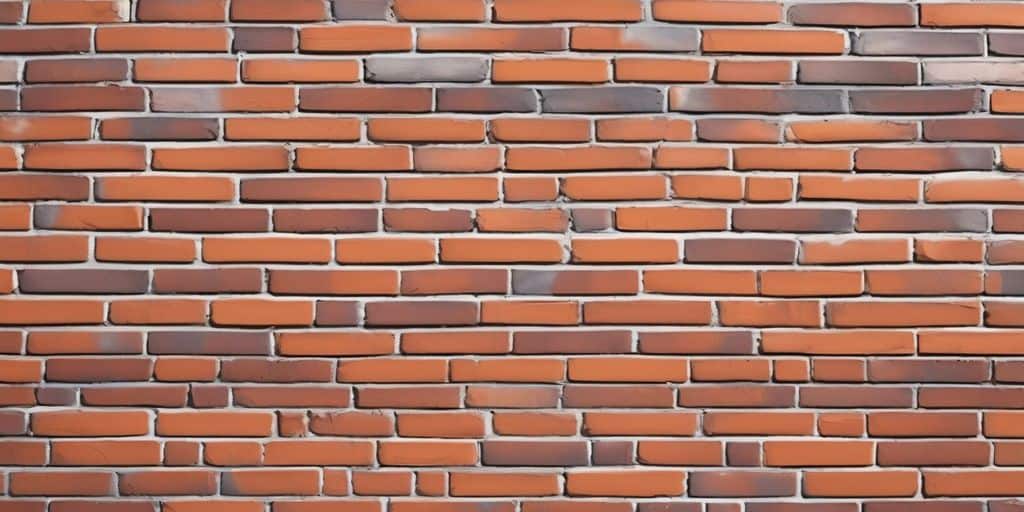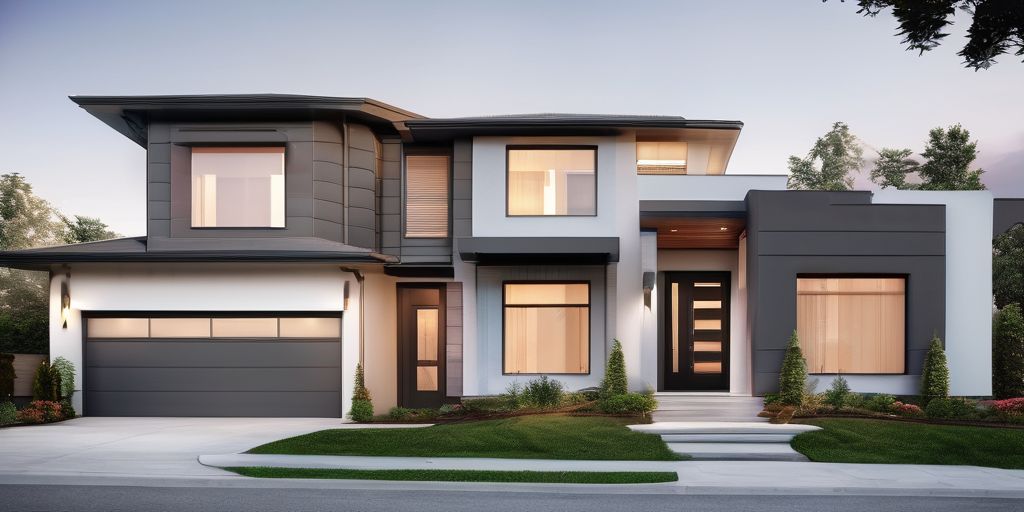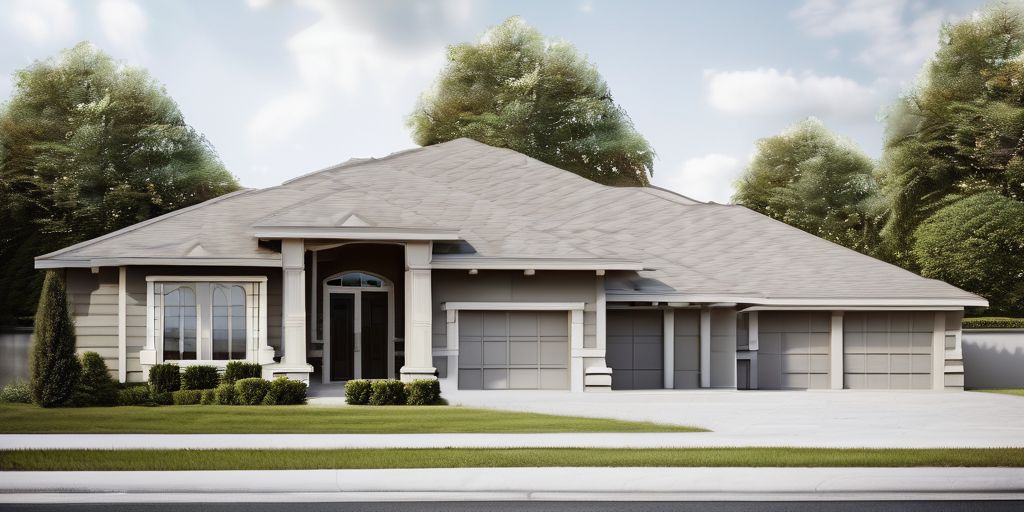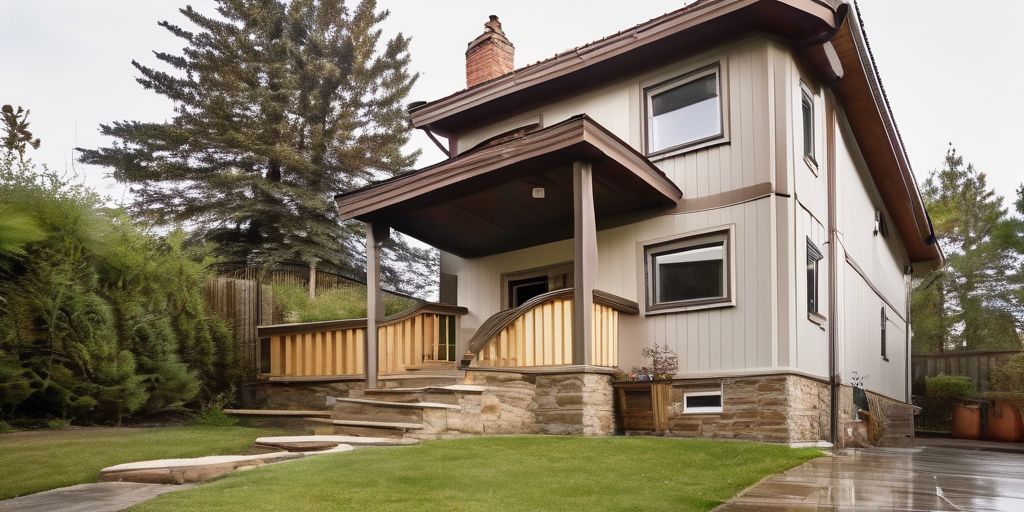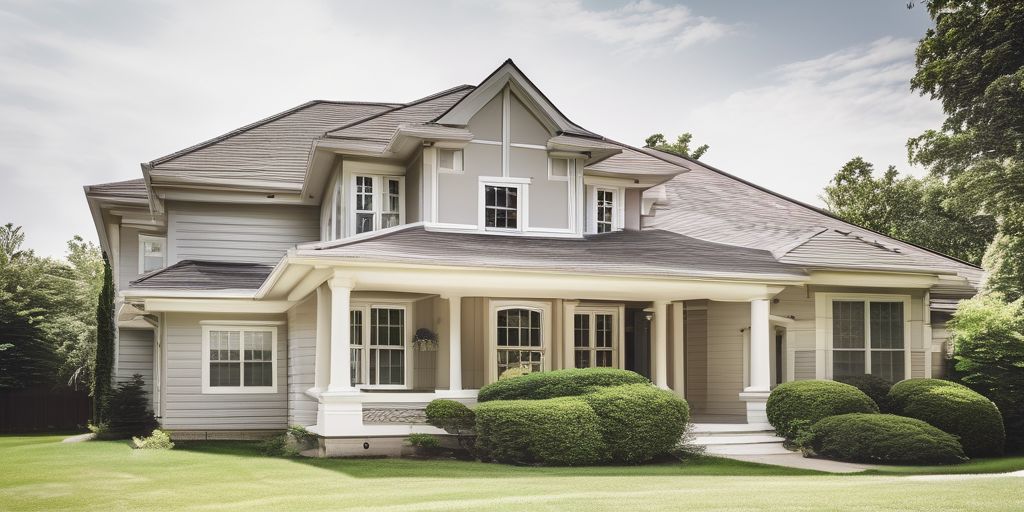Deciding whether to paint your brick home yourself or hire a professional is an important choice. Each option has its own set of benefits and challenges. Understanding these can help you achieve the best results for your project. This article will guide you through the key considerations, preparation steps, safety tips, and more.
Key Takeaways
- Hiring professional painters ensures expertise and a long-lasting finish, but comes at a higher cost.
- A DIY approach can save money but requires thorough preparation and research to avoid common mistakes.
- Proper preparation, including cleaning and repairing brick surfaces, is essential for a successful paint job.
- Safety is crucial when painting brick, especially when working on ladders and handling chemicals.
- Regular maintenance of painted brick homes helps preserve their appearance and protect them from the elements.
Deciding Between DIY and Professional Painting
Choosing between a DIY approach and hiring a professional painter is a big decision. Each option has its own set of benefits and challenges. Understanding these can help you make the best choice for your project.
Benefits of Hiring Professional Painters
Hiring a professional painter can offer several advantages:
- Expertise: Professionals have the skills to select the right paint and properly prepare the brick surface.
- Safety: Working on ladders and scaffolding can be dangerous. Professionals are trained to handle these risks.
- Quality: A professional job often results in a more durable and aesthetically pleasing finish.
Advantages of a DIY Approach
Opting for a DIY approach also has its perks:
- Cost Savings: Doing it yourself can be cheaper than hiring a professional.
- Flexibility: You can work on your own schedule and make changes as you go.
- Satisfaction: Completing a project yourself can be very rewarding.
Assessing the Scope of Your Project
Before deciding, assess the scope of your project:
- Size of the Area: Larger areas may be more challenging to tackle on your own.
- Condition of the Brick: Older or damaged brick may require special preparation.
- Tools and Materials: Ensure you have the necessary tools and materials for the job.
Bold: Hiring a professional can offer peace of mind with their expertise.
Italics: An exterior painter can handle the complexities of painting brick surfaces.
Essential Preparation Steps for Painting Brick
Cleaning and Repairing Brick Surfaces
Before you start painting, it’s crucial to clean the brick thoroughly. Use a wire brush and soapy water to scrub off any dirt or efflorescence. If the surface is still dirty, mix trisodium phosphate (TSP) with water for a deeper clean. Always wear safety goggles and gloves when using TSP. Inspect the brick for any damage, such as cracks or crumbling mortar, and repair these issues before moving on.
Choosing the Right Paint
Selecting the right paint is essential for a long-lasting finish. Opt for a high-quality masonry or latex paint designed specifically for brick surfaces. Don’t forget to use a primer first; it helps the paint adhere better and ensures a smoother finish. Apply the primer with a high-quality, nylon-polyester brush and let it dry completely before painting.
Gathering Necessary Tools and Materials
Having the right tools and materials on hand will make your project go smoothly. Here’s a list of what you’ll need:
- Wire scrub brush
- Soap and water
- Trisodium phosphate (if necessary)
- Paint brush and roller
- Masonry or latex paint
- Latex primer
- Drop cloths
- Painter’s tape
Preparation is the most important part of a successful and streamlined brick paint job. Power-washing, taping off surfaces, and sanding will probably take the majority of your time and energy.
Make sure to cover windows, doors, and anything else nearby with painter’s tape and drop cloths to protect them from paint splatters.
Safety Considerations When Painting Brick
When painting brick, safety should be your top priority. Here are some key considerations to keep in mind to ensure a safe and successful project.
Working with Ladders and Scaffolding
Using ladders and scaffolding can be tricky. Always make sure they are stable and on level ground. Never overreach when on a ladder; move it instead. If you’re using scaffolding, double-check that all parts are securely fastened.
Handling Paint and Chemicals Safely
Paints and chemicals can be hazardous. Wear gloves and masks to protect your skin and lungs. Ensure you work in a well-ventilated area to avoid inhaling fumes. Proper preparation and handling of these materials are essential for your safety.
Protective Gear and Equipment
Wearing the right protective gear is crucial. This includes safety goggles, gloves, and long-sleeved clothing. If you’re working with high-quality paint, make sure to read the safety instructions on the label.
Taking these safety precautions seriously can make a big difference in the outcome of your project and your well-being.
By following these do’s and don’ts of painting brick exteriors, you can ensure a safer and more effective painting experience.
Maintenance Tips for Painted Brick Homes
Maintaining your painted brick home is crucial for preserving its appearance and protecting it from the elements. Regular maintenance can prevent common issues and extend the life of your paint job.
Regular Cleaning and Inspection
- Painted surfaces might need more frequent cleaning to maintain their appearance, especially in areas prone to dirt and mildew.
- Occasional power washing can remove dirt and grime, keeping your painted surfaces looking fresh. However, it’s important to use a gentle setting to avoid damaging the paint.
- Inspect your home annually for any chips or cracks in the paint and perform touch-ups as needed to prevent moisture from penetrating the brick.
Touch-Up Painting and Repairs
- Depending on the paint quality and exposure to harsh weather, a painted brick exterior may need to be repainted every few years to keep it looking fresh. The Brick Industry Association recommends repainting every 3-5 years.
- Using high-quality paint specifically designed for exterior brick can significantly reduce the need for frequent maintenance and repainting.
- Reapply waterproof caulk at window seals and inspect areas where your roof meets the brick for re-waterproofing.
Protecting Your Brick from the Elements
- Consider future changes: Homeowners should carefully choose their paint color, considering how it will fit with future changes in landscaping or exterior updates.
- In areas with harsh weather, selecting sun-resistant exterior brick paint can help maintain the look of your home.
- Regular upkeep, such as cleaning and touch-ups, can protect your brick from the elements and ensure longevity.
Regular maintenance is key to keeping your painted brick home looking its best and protecting it from damage. Simple steps like cleaning, inspecting, and touching up can make a big difference.
Climate Considerations for Painting Brick
When contemplating painting your brick house, it’s crucial to understand that not all climates are created equal, especially concerning exterior paint jobs. Different weather conditions can significantly impact the longevity and aesthetics of your painted brick, necessitating specific types of paint or additional protections. Below, we delve into how various climates affect painted brick and discuss the best practices for ensuring a lasting, vibrant finish regardless of where you live.
Impact of Weather on Paint Durability
Weather plays a significant role in the durability of your painted brick. Hot and humid climates can cause paint to peel or blister due to the high moisture levels. On the other hand, cold and wet climates can lead to moisture being trapped in the brick, causing damage over time. It’s essential to choose the right type of paint to withstand these conditions.
Best Seasons for Exterior Painting
Timing your painting project is crucial for the best results. The ideal seasons for painting exterior brick are typically spring and fall. During these times, temperatures are moderate, and humidity levels are lower, allowing the paint to adhere better and dry properly. Avoid painting during extreme weather conditions, such as the peak of summer or winter.
Regional Climate Factors to Consider
Different regions have unique climate challenges that can affect your painting project. For instance:
- Hot and Dry Climates: Use paint with high UV resistance to prevent fading.
- Cold and Wet Climates: Opt for moisture-resistant paint to avoid trapping water in the brick.
- Variable Climates: Choose versatile paint that can handle a range of weather conditions.
Remember, the key to a successful brick painting project is understanding your local climate and selecting the appropriate materials and timing. This will help ensure a beautiful and long-lasting finish for your home.
Common Pitfalls in DIY Brick Painting
Avoiding Paint Application Mistakes
When painting brick, it’s easy to make mistakes that can affect the final look and durability. Overlooking surface preparation is a common error. Make sure to clean and repair the brick before painting. Also, choosing the wrong type of paint can lead to poor results. Always use masonry paint designed for brick surfaces.
Dealing with Brick Surface Issues
Brick surfaces can have various issues like cracks, chips, or uneven textures. These need to be addressed before painting. Ignoring these problems can result in a less-than-perfect finish. Use fillers and sealants to fix any imperfections.
Ensuring Long-Lasting Results
To ensure your painted brick lasts, you need to take several steps. First, evaluate the sheen options for your paint. Some sheens are more durable and easier to clean than others. Regular maintenance, like routine cleaning and touch-ups, is also crucial for longevity.
Painting brick can enhance your home’s curb appeal, but it requires careful planning and execution to avoid common pitfalls.
Cost Comparison: DIY vs. Professional Painting
Estimating DIY Project Costs
When considering a DIY painting project, it’s important to account for all potential expenses. Paint and materials can add up quickly. Here’s a simple breakdown:
- Paint: $200 – $600
- Brushes, rollers, and trays: $50 – $100
- Drop cloths and tape: $30 – $50
- Cleaning supplies: $20 – $40
In total, you might spend around $300 to $800 on materials alone. This doesn’t include the value of your time and effort.
Understanding Professional Pricing
Hiring professional painters can be more expensive, but it often ensures a higher quality finish. Professionals typically charge by the square foot. On average, you might expect to pay between $1.40 to $4.20 per square foot. For a 2,000 square foot home, this could range from $2,800 to $8,400.
Evaluating the Value of Your Time
One of the biggest factors in deciding between DIY and professional painting is the value of your time. Painting a brick home is labor-intensive and time-consuming. If you have a busy schedule, hiring professionals might be more cost-effective in the long run.
Remember, a poorly done paint job can lead to additional costs down the line for repairs and repainting. Assessing the scope of your project and considering the longevity of paint on exterior brick surfaces can help you make an informed decision.
When deciding between DIY and professional painting, it’s important to consider both cost and quality. DIY might save you money upfront, but professional painters bring expertise and efficiency that can save you time and ensure a flawless finish. Want to learn more about the benefits of hiring a pro? Visit our website for detailed comparisons and expert advice.
Conclusion
Deciding between a DIY approach and hiring a professional to paint your brick home is a big choice. Each option has its own set of benefits and challenges. If you enjoy hands-on projects and have the time and tools, DIY can be a rewarding experience. However, if you want a flawless finish and peace of mind, hiring a professional might be the way to go. Remember, no matter which route you choose, proper preparation and maintenance are key to ensuring your painted brick looks great for years to come. Happy painting!
Frequently Asked Questions
Is it better to hire professional painters or do it myself?
Hiring professional painters can give you peace of mind because they have the expertise and tools to do the job right. If you prefer to do it yourself, make sure to do thorough research and preparation.
What are the main steps to prepare brick for painting?
The main steps include cleaning the brick surface, repairing any damage, choosing the right paint, and gathering all necessary tools and materials.
What safety measures should I take when painting brick?
Always use ladders and scaffolding safely, handle paint and chemicals with care, and wear protective gear like gloves and masks.
How do I maintain painted brick?
Regularly clean and inspect the painted brick, do touch-up painting and repairs as needed, and protect the brick from harsh weather conditions.
When is the best time to paint brick?
The best time to paint brick is during mild weather conditions, usually in the spring or fall. Avoid painting during extreme temperatures or wet conditions.
What are the common mistakes to avoid when painting brick?
Common mistakes include not properly preparing the brick surface, using the wrong type of paint, and not applying the paint evenly.

